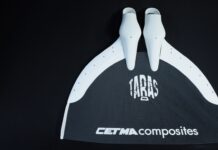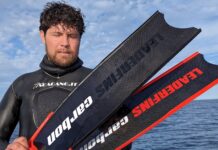(By Massimo De Pascalis)
Boredom is a great source of reflection and forced into the captivity of the quarantine due to this damned new form of Coronavirus, I came up with changes that I had intended to make on my spearguns and that the work had not allowed me to implement.
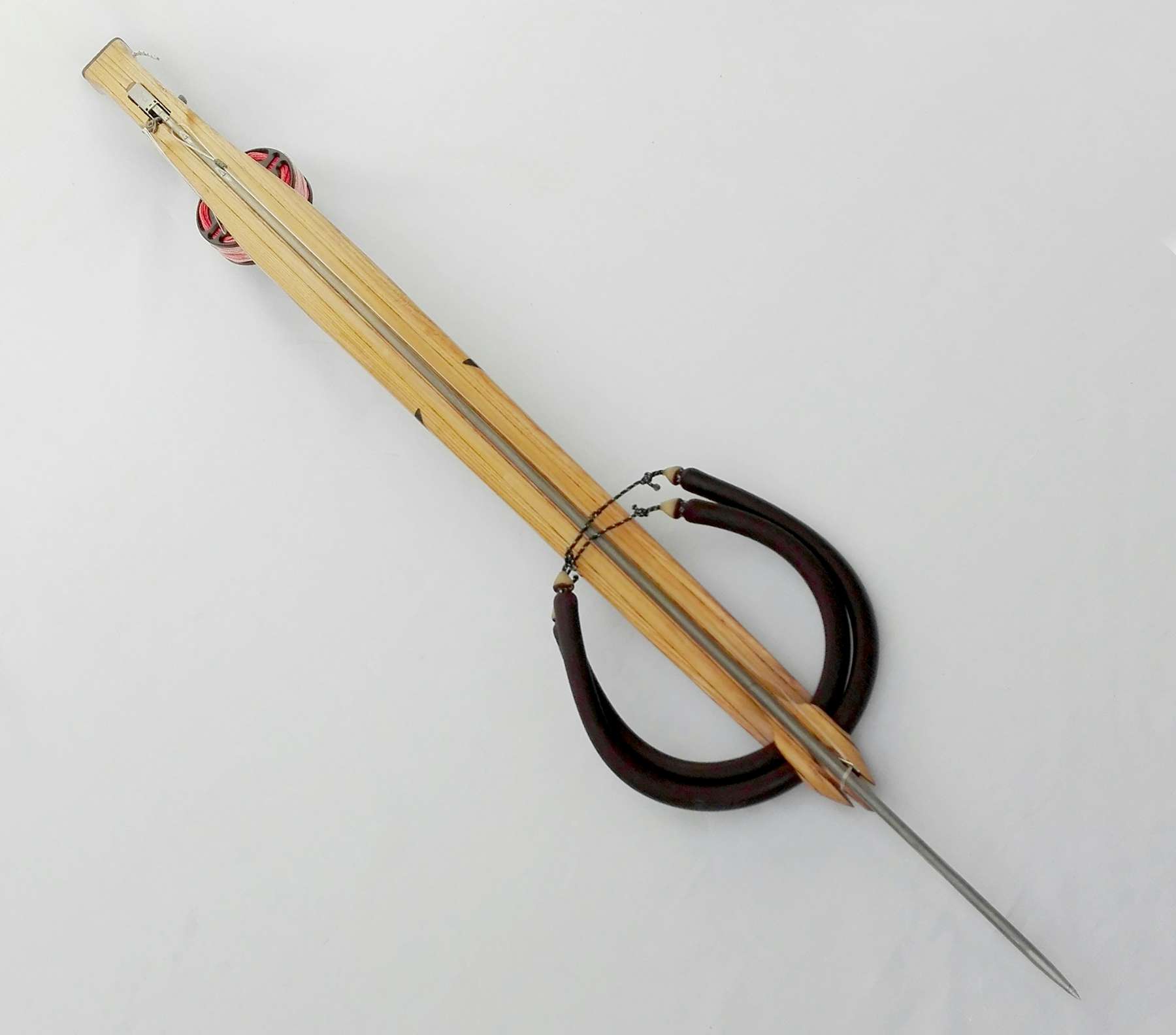
However, I must specify three basic concepts regarding my thinking on all kinds of spearguns: 1) there is no perfect one, but the most suitable for your technique; 2) in choosing your own speargun you will always have to sacrifice some performances to enhance others; 3) the multifunctional speargun must necessarily reduce all its performances.
Starting from the assumption that my technique is essentially the ambush, therefore a scout who observes and improvises the technique according to the situation, I basically need a versatile speargun who is able to remain on the characteristics that based on the type of elastic bands can approach as far as possible to the concepts n1 and n3. So, up to now, I have worked on sleek lines to enhance the brandishing and a medium reactive elastic system with classic good quality 14.5 mm double elastic bands.
Unfortunately, this type of solution has the classic limitations related to the n2 concept and confirms a pinpoint accuracy in the shot with a straight arm, while with a flexed arm a slight high shot.
In a desperate search to do something, forced by an unavoidable home captivity, I remembered having placed in the hidden corner of the closet an old ash tree wood multilamellar board, which I had glued with the dear old Red Glue, the only historical glue recognized by the old masters of naval carpentry then replaced by other epoxies.


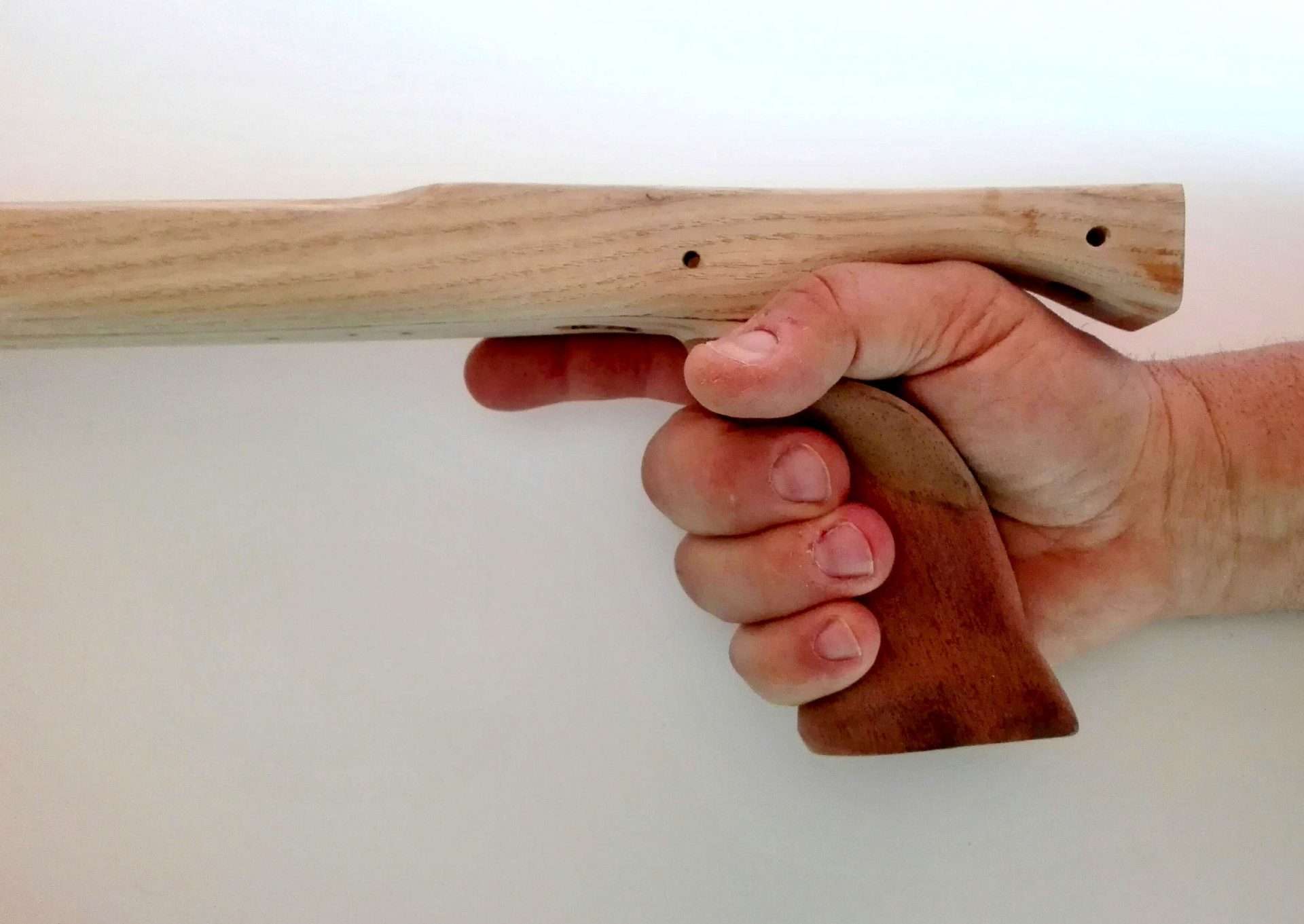
MGM Sub Maori Skwalo naked heldThe ash tree wood has extraordinary mechanical characteristics, but if it is to be used to build spearguns it has a high specific weight, among other things extremely different between lots and places of origin (the dried specific weight can vary between 0.57 kg per 1 kg per dm3). Taking the measures of the axle and developing it in terms of specific weight, my piece of ash tree wood was the heaviest, 1 kg per dm3.
These characteristics, perhaps a little excessive, would certainly have positively influenced the improvement of the shot with the arm flexed: I would have had a speargun of greater weight which, thanks to its mass, would have made the recoil less evident.
Its considerable weight made it necessary for me to develop the project on extremely meticulous calculations to make sure that its shape reduced the volume of the Maori to a minimum, while remaining neutral in the sea. To achieve this, I had to use all very light components such as the Sigalsub Reverse trip, the LG polymer reel and the 6.5 mm shaft.
Once the work on the barrel was finished, I assembled all the components as if the Skwalo was ready for use, doing a test in the tank. Everything was perfect except the handle that overturned it leaving letting go off the speargun, and it is a defect that I hate, but considering the weight of the ash tree wood it was absolutely predictable. For now it is so, for the next I will try a lighter game.
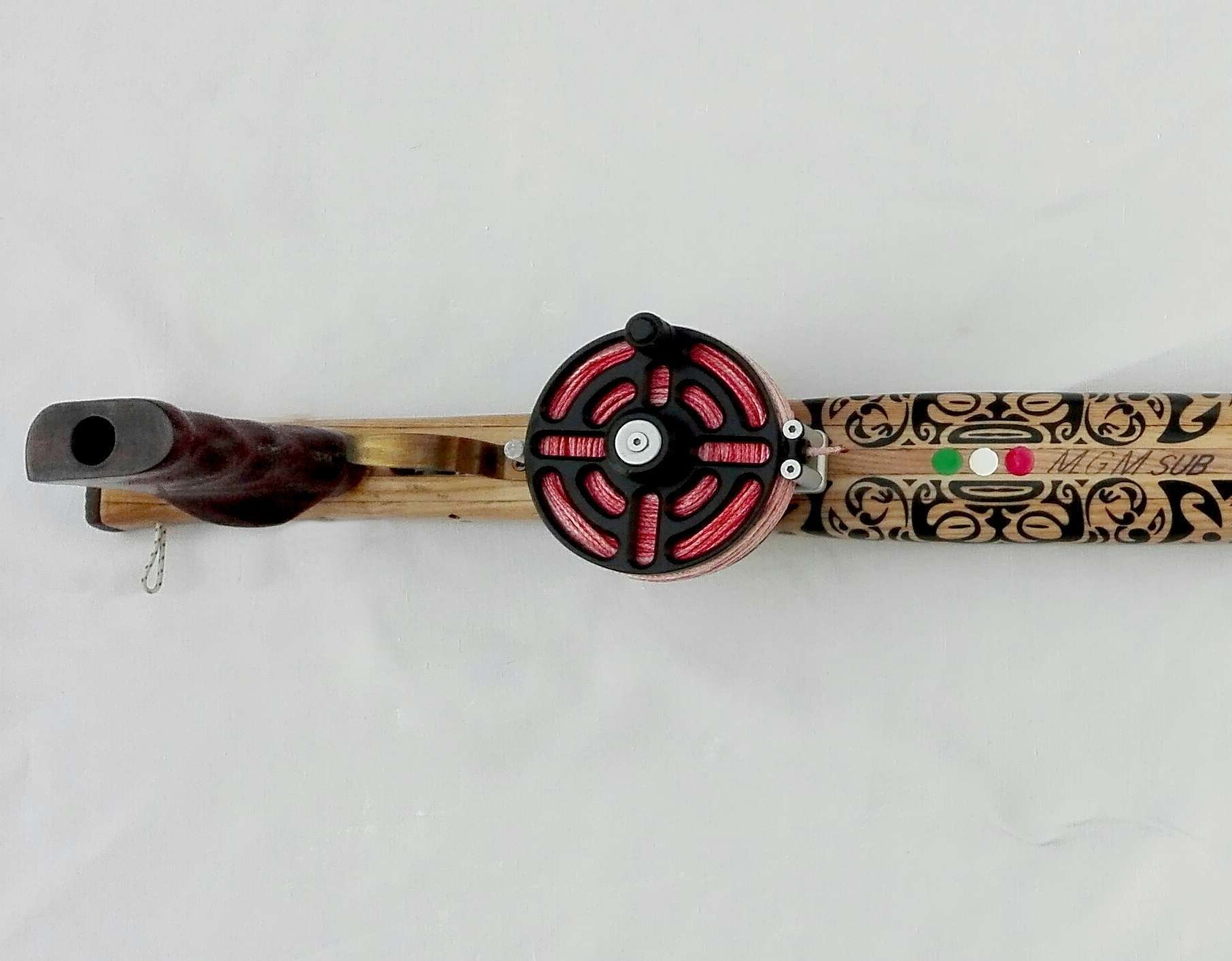
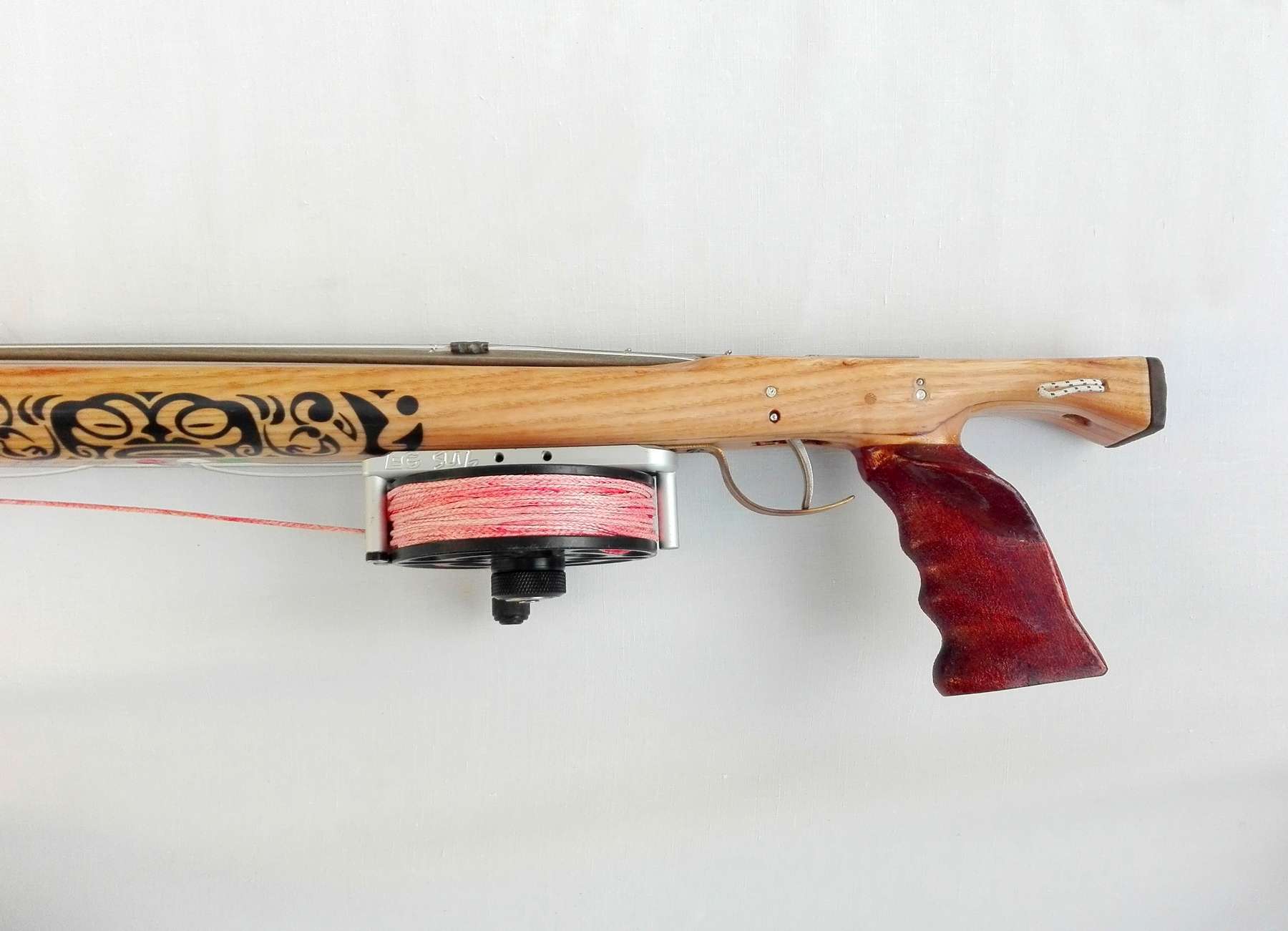
MGM Sub Maori Skwalo set up with LG reel



During the finishing I noticed some beautiful aesthetic details such as the red coloring of the gluing and the typical veins of a lived-in wood, and even there with the fear of returning to total boredom I had the instinct to airbrush the speargun making it become a true Maori. I looked for the negatives in my drawer of wonders and I went to work adding, cutting and readjusting the whole design with the central SKWALO hammer.
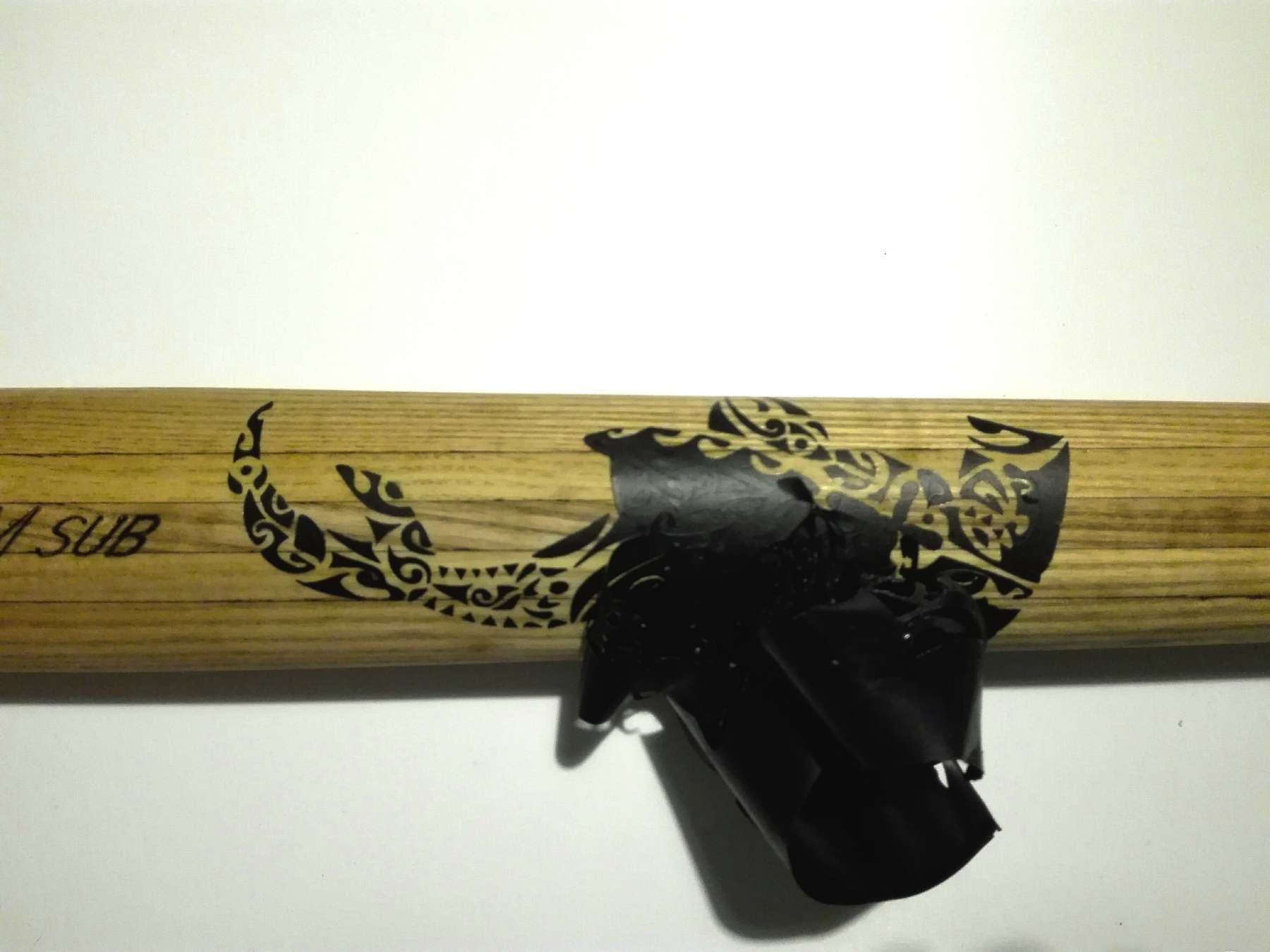
Once the assembly phase was finished, it remained only to decide how to perfection the speargun with elastic bands and ad hoc shaft. As a first option, I decided to use 380% 14.5mm Reactive Sigalsub elastic bands, which I will replace later with 16mm ones, and a streamlined shaft, which allows me the maximum range with little friction and that at 90% put the fish in the line. What better auction than the Sigalsub Ghost? The long barb of the Ghost could create many problems in the dens because it does not retract due to the spring, but in my case in these periods the shots are all in open water and very often with a flexed arm.
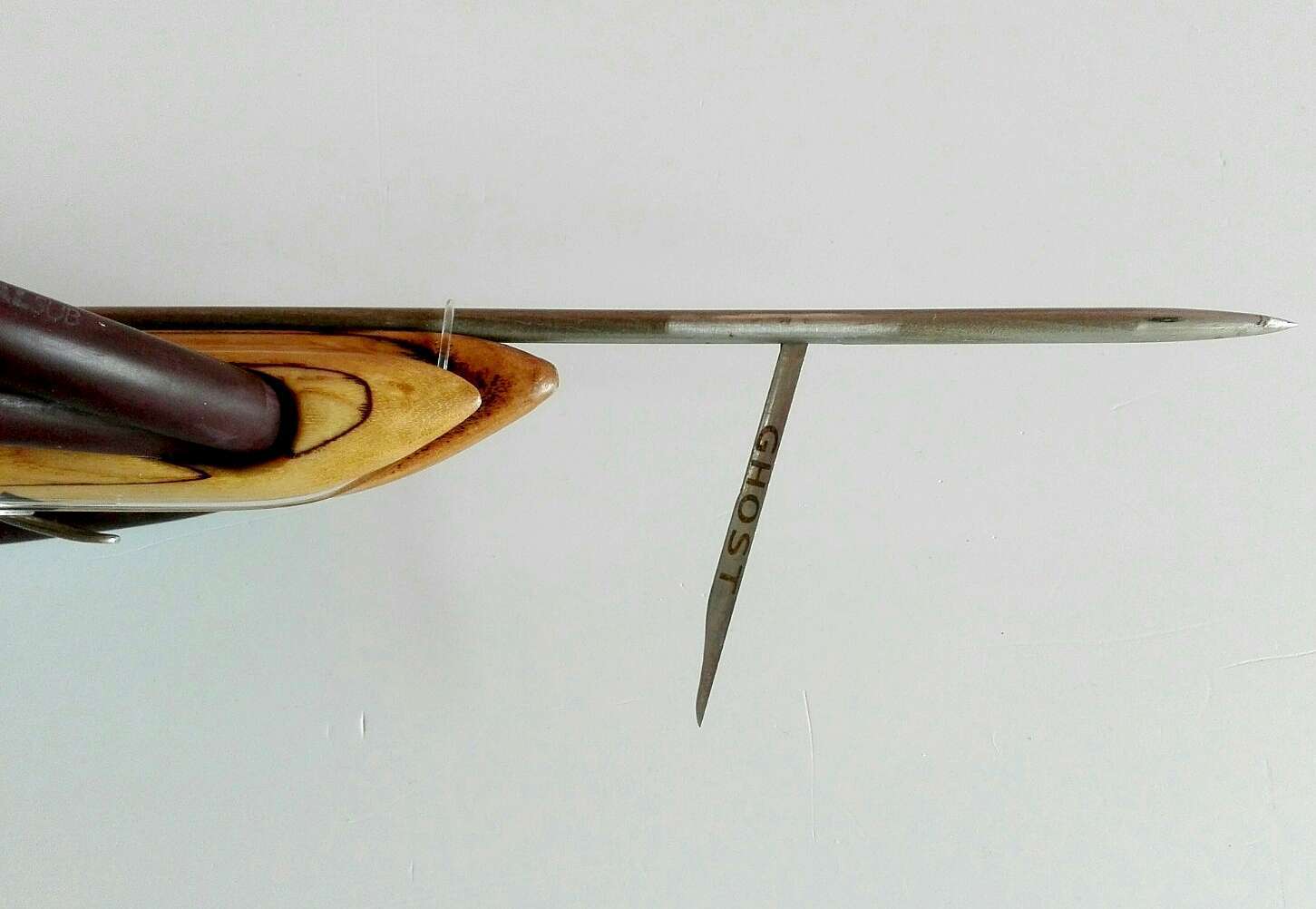
Now there is nothing else to do but wait for the 4th of May (hopefully!) to try some nice catches, and there will be the real proof of performance.

Massimo De Pascalis and MGMSub

Born in Rome, Italy, year ’62, passion for spearfishing of Massimo De Pascalis comes from his father Carlo, that introduces him to the different techniques. He dives in Circeo, Pontinian isalands, but also Greece, Corsica, Sardinia and Sicily. In Rome he obtains his degree as dental technician, and after some years opens a laboratory specialized in dental restoration and gnatological devices for the recovering of mandibular temporal disfunsions. In 1996 Massimo moves to Chieti, where relation with spearfishing changes deeply, as he has to adapt to the constantly turbid waters of the Adriatic sea costs of his area. In 2004 he decides to officialize the activity, brought forward in the previous years, of design and manufacturing of wooden spearguns, already presented on AP, founding MGMsub. Among his most famous models, the CH90, also known as Muletto.
At the base of MGMSub speargins are the high brandishing capacity, lightness and maneuverability of the handle, whose angle with the barrel, the taylor made dimensioning ofr each spearo and the not extreme anathomic design permit to release the shaft even in the complex positions.

